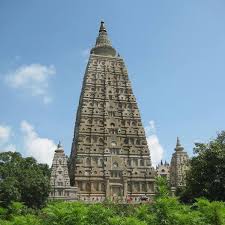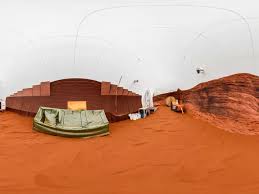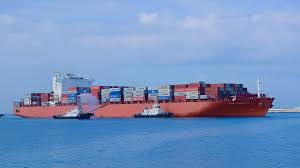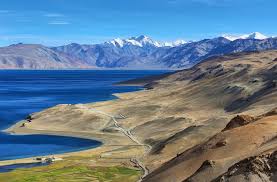Today’s Current Affairs: 15th July 2024 for UPSC IAS exams, State PSC exams, SSC CGL, State SSC, RRB, Railways, Banking Exam & IBPS, etc
Table of Contents
Mahabodhi Temple Complex:

A geospatial analysis utilising satellite images and ground surveys has found evidence of the presence of “huge architectural wealth” buried in the Mahabodhi temple complex and its surroundings in Bihar’s Bodh Gaya.
- Mahabodhi Temple Complex is one of the four holy sites related to the life of the Lord Buddha, marking the spot of the Buddha’s Enlightenment (Bodhi).
- It is located in Bodh Gaya, in central Bihar, on the banks of the Niranjana River.
- It is one of India’s few surviving examples of early brick structures.
- The first temple was built by Emperor Ashoka in the 3rd century B.C., and the present temple dates from the 5th or 6th centuries.
- It is one of the earliest Buddhist temples built entirely in brick, still standing from the late Gupta period, and it is considered to have had a significant influence on the development of brick architecture over the centuries.
- The sculpted stone balustrades are an outstanding early example of sculptural reliefs in stone.
- It was recognized as a UNESCO World Heritage Site in 2002.
- The present Temple Complex comprises the 50-meter-high grand Temple, six sacred places within an enclosed area, and a seventh one, the Lotus Pond, just outside the enclosure to the south.
- The most important of the sacred places is the giant Bodhi Tree.
- This tree is to the west of the main temple and is supposed to be a direct descendant of the original Bodhi Tree, under which the Buddha had his enlightenment.
- Ashoka’s stone slab purporting to mark the exact position where the Buddha sat is traditionally called the Buddha’s vajrasana.
Upper Siang Hydropower Project:

Locals are protesting against the Upper Siang hydropower project in Arunachal Pradesh.
- Upper Siang Hydropower Project is a proposed 11,000-megawatthydropower project on the Siang River in the Upper Siang district of Arunachal Pradesh.
- The Brahmaputra River, which in Arunachal Pradesh is known as the Siang River.
- The area is predominantly inhabited by the Adi tribe of Arunachal Pradesh.
- The National Hydroelectric Power Corporation (NHPC) and the North Eastern Electric Power Corporation (NEEPCO) have jointly been assigned the task of construction of this project.
- On 30 December 2022, NHPC submitted a pre-feasibility report of the Project, according to which the installed capacity of the project would be 11,000 MW, the reservoir would have a storage capacity of 9 billion cubic metres (BCM) and the estimated cost of the project would be around 1,13,000 crores.
- It is seen as a strategic move to counter China’s hydel projects on the Yarlung Zangbo (Brahmaputra) River, particularly a 60,000 MW ‘super dam’ in Tibet’s Medog county.
NASA’s CHAPEA Project:

After a year-long simulated Mars mission as part of the CHAPEA project, a NASA crew emerged from their 17,000 sq ft habitat at Johnson Space Centre.
- Crew Health and Performance Exploration Analog (CHAPEA) is a series of analog missions conducted by NASA that will simulate year-long stays on the surface of Mars.
- It aims to assess and collect data regarding NASA’s food system and physical and behavioral health patterns in humans, which will help during future space missions.
- Each mission will consist of four crew members living in Mars Dune Alpha, an isolated 1,700-square-foot habitat.
- Mars Dune Alpha is a 3D-printed structure located at Johnson Space Center in Houston, Texas.
- It simulates a realistic Mars habitat to support long-duration, exploration-class space missions.
- The analog mission will be as Mars-realistic as feasible, which may include environmental stressors such as resource limitations, isolation, equipment failure and significant workloads.
- During the mission, the crew will conduct simulated spacewalks and provide data on a variety of factors, which may include physical and behavioral health and performance.
- After the successful completion of this mission recently, two more are scheduled for 2025 and 2026.
Rosewood Tree : Guidelines

The Convention on International Trade in Endangered Species of Wild Fauna and Flora (CITES) has issued guidelines for its members involved in the sustainable harvest and trade of rosewood specimens.
- Rosewood is a commercial term encompassing a wide range of tropical hardwoods in the Fabaceae (Leguminosae) family
- It is native to South-East Asia, Papua New Guinea, the Solomon Islands, Sabah, Philippines, Indonesia and Malaysia.
- Indian Rosewood : Dalbergia sissoo (North Indian rosewood)
- It is a fast-growing, hardy, deciduous crooked rosewood tree is native to the foothills of the Himalayas, ranging from Afghanistan in the west to Bihar, India, in the east.
- It has long, leathery leaves and whitish or pink flowers.
- It is primarily found growing along river banks above 200 m (700 ft) elevation, but can range naturally up to 1,400 m (4,600 ft).
- Dalbergia latifolia (East Indian Rose wood)
- Common names: East Indian Rosewood, Black Rosewood, Bombay Black wood, Indonesian Rosewood, Malabar rosewood.
- It is commonly used for furniture, musical instruments, decorative items and veneers.
- Conservation status: Currently, these species are listed in Appendix II of the CITES list.
National One Health Mission : Meeting

The Union Health Minister chaired the first executive committee meeting of the National One Health Mission.
- The National One Health Mission was approved by the Prime Minister’s Science, Technology, and Innovation Advisory Council (PM-STIAC) in 2022.
- The mission aims to coordinate across ministries in achieving overall pandemic preparedness and integrated disease control against priority diseases of both human and animal sectors.
- The mission will help in institutionalising the ‘One Health’ approach.
- One Health is an approach that recognises that the health of people is closely connected to the health of animals and our shared environment.
- The specific efforts under the National One Health Mission include:
- Implementing Integrated Disease Surveillance
- Environmental Surveillance System
- Develop Robust Outbreak Investigation Mechanisms
- Critical pillars of preparedness in the form of targeted R&D to develop important tools such as vaccines, diagnostics and therapeutics, clinical care, streamline data and information across sectors as well as close community participation will also be addressed by the mission.
Vizhinjam International Seaport : First Cargo Ship

Kerala Chief Minister officially welcomed the first cargo ship, the Chinese vessel ‘San Fernando,’ at the Vizhinjam International Sea Port.
- Developed by Adani Ports and Special Economic Zone Ltd (APSEZ), this marks the beginning of operations for India’s largest deep-water trans-shipment port.
- The port is constructed under a public-private partnership.
- The Vizhinjam International Transhipment Deepwater Multipurpose Seaport is an ambitious project taken up by Government of Kerala.
- It is designed primarily to cater container transhipment besides multi-purpose and break bulk cargo.
- The port is being currently developed in landlord model with a Public Private Partnership component on a design, build, finance, operate and transfer (“DBFOT”) basis.
e-Office:

The Indian government is set to implement the e-office system in 133 attached and subordinate offices, as well as autonomous bodies.
- The Department of Administrative Reforms and Public Grievances (DARPG) will lead this initiative with the National Informatics Centre (NIC) serving as the knowledge partner.
- A mission mode project under the National e-Governance Program, developed by the National Informatics Centre (NIC), provides a digital workplace solution.
- Built on open architecture, it is a reusable product for replication across governments.
- Its key components include:
- eFile: File Management System
- KMS: Knowledge Management System
- WAW: Work from Anywhere portal
- SPARROW: Smart Performance Appraisal Report Recording Online Window
Changthang Wildlife Sanctuary : In News

As the summer rush peaks in July, a conservationist looks at how rash development and irresponsible tourism are threatening Changthang Wildlife Sanctuary’s unique animals and environment.
- Changthang Wildlife Sanctuary is located in the Ladakhi Changthang plateau in the Leh district of Ladakh.
- It covers an area of almost 1,600 sq. km and is home to the highest altitude water lakes, namely, Tso Moriri (which also happens to be the highest lake on earth), Pangong Tso and Tso Kar.
- The Changthang region is inhabited by nomadic pastoral communities, primarily the Changpa tribe, who lead a traditional way of life herding yaks, goats and sheep across the vast grasslands.
- This region is steeped in Tibetan Buddhist culture and heritage.
- It includes one of the world’s highest villages, Korzok Village, which attracts tourists to the Korzok Monastery.
- Fauna: Tibetan wolf, wild yak, bharal, brown bear and the mormot that seems to be present everywhere.
- Flora: It is home to almost 200 species of wild plants that grow in the higher pastures and are food for the animals inside the sanctuary.
Kharchi Puja 2024: Tripura

The Prime Minister of India wished everyone, particularly the people of Tripura, on the occasion of Kharchi Puja.
- Kharchi Puja is one of the main festivals of Tripura.
- It is performed during the months of July-Auguston the eighth day of the new moon.
- The meaning of Kharchi can be understood by splitting the word into two Tripuri words “Khar” or Kharta meaning sin and “Chi” or si meaning cleaning. Hence it signifies the cleansing of our sins.
- It occurs during the month of ‘Ashad’ on the ‘Shukla Ashtami’ day.
- The fourteen Gods are worshipped by the Royal priest ‘Chantai.
- It lasts for seven days and it takes place at old Agartala in the Fourteen Gods temple known as the ‘Chaturdasha Devata’ temple premises.
- The Kharchi Puja deities do not have a full body; they have only heads which are worshipped.
- On the day of the puja, the fourteen Gods are taken from the temple to the river Saidraby the Chantai members and given bathe with the holy river water, then carried back to the temple.
- This festival’s customs are completely related to the authentic Tripuri traditions.
RBI’s Financial Inclusion Index:

The Reserve Bank of India (RBI) has announced that the Financial Inclusion Index (FI-Index) has risen to 64.2 in March 2024, up from 60.1 in March 2023, indicating significant progress in financial inclusion across the country.
- The FI-Index is a comprehensive measure of financial inclusion, ranging from 0 to 100, with 0 representing complete financial exclusion and 100 indicating full financial inclusion.
- The FI-Index is published annually in July every year.
- It consists of three main parameters: Access (35%), Usage (45%), and Quality (20%). The index is based on 97 indicators covering banking, investments, insurance, postal services, and pensions.
- It was developed in consultation with the government and sectoral regulators to measure ease of access, availability, usage, and quality of financial services.
- The improvement in the index was driven by growth across all sub-indices, with the usage dimension contributing the most to the overall increase.
- The index has been constructed without a base year, reflecting the cumulative efforts of all stakeholders towards financial inclusion over the years.




